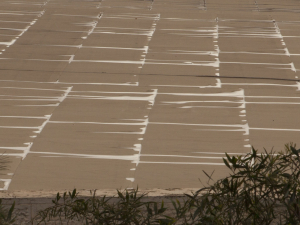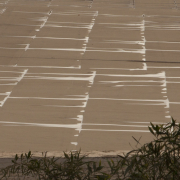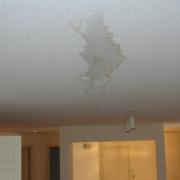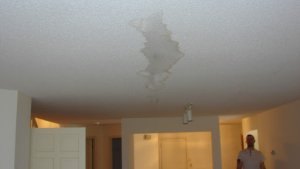Standing Water on Flat Roof
Standing Water on Flat Roof
If you are a homeowner or business owner with a property sporting a flat roof, you have probably been noticing some problems that aren’t quite common as when you have a sloped or gable roof. A common issue with flat roofs is that water tends to form ponds or puddles due to the inability of water to naturally drain away from the flat roof with just the aid of gravity. Instead, flat roofs rely heavily on the installed gutter system. So, if you own, or manage, a building with a flat roof, you may have noticed an issue with ponding water.

Unfortunately, aside from having problems with the gutter system, there is also the chance that the thing causing standing water on the flat roof is the design of the roof itself. Flat roofs have a low slope but are not completely flat, which is why water still flows into the gutters. When a flat roof is not designed properly, then water tends to stand in lower end areas. Usually, these are the points where water collects and where most roofers put in an efficient drainage system. However, when the drainage and gutter system are not installed effectively, water will end up ponding every time there is rain or snow.
What is Standing Water?
Standing or ponding water is a common thing when it comes to flat roofs. Right after a storm or when the snow starts to melt, you’ll likely find water on your flat roof. However, this is not a problem until the water does not drain or evaporate after 48 hours. When you still find water on your flat roof after a few days, then you definitely need to get your roof assessed because while this may not seem like a huge issue, the problems that ponding water can cause can be very costly.
Ponding water can cause many long, and short-term effects. So, here a few things that you should know to protect the large investment that is your flat roof.
Common Reasons for Standing Water on Flat Roof
While it may be difficult to identify the main cause of ponding water from the start, there are some common reasons which you should consider. When you see ponding water, however, the best thing to do is to contact your local roofing company and get a thorough assessment to identify the cause and then implement the right solutions to fix and prevent the same thing from happening in the future.
- If you don’t regularly maintain your roof gutters, leaves, sticks, and other random debris tends to pile up on these gutters and cause a blockage which prevents water from draining efficiently.
- When there is too much roofing material along the edges of a flat roof, the excess material may end up blocking water from draining into the gutters even when the gutters aren’t blocked.
- Improperly installed roof flashing can also be another cause.
Damage caused by Standing Water on Flat Roof
Finding water on the top of your flat roof may not seem like a big deal. While it isn’t a cause for immediate alarm, it is still something that needs to be repaired and fixed up sooner rather than later. Given time, standing water can cause other major problems to your roof. Some of this includes the problems listed below.
- Standing water can magnify the effect of harmful UV rays which can cause damage to your roof. With the ponding water, this damage is sped up.
- Ponding water can add more weight to the area where the water collects. This puts extra pressure on this area, causing it to sag and get deeper, making it even more prone to collecting water. Aside from compounding the problem, the added weight can also damage the underlying structure.
- On the areas where water collects, algae and moss tend to grow. This fungal and organic growth can affect other areas of the roof and even seep into the underlying structure.
When any of the above happens and as your roofing membrane is weakened and roofing leaks begin, the structural integrity of your flat roof may become compromised. This results in many risks, including a full or partial collapse.
Now that you are aware of the many risks of ponding water on your flat roof, it is essential to take the necessary steps to rectifying the issue to ensure no further damage is caused.





